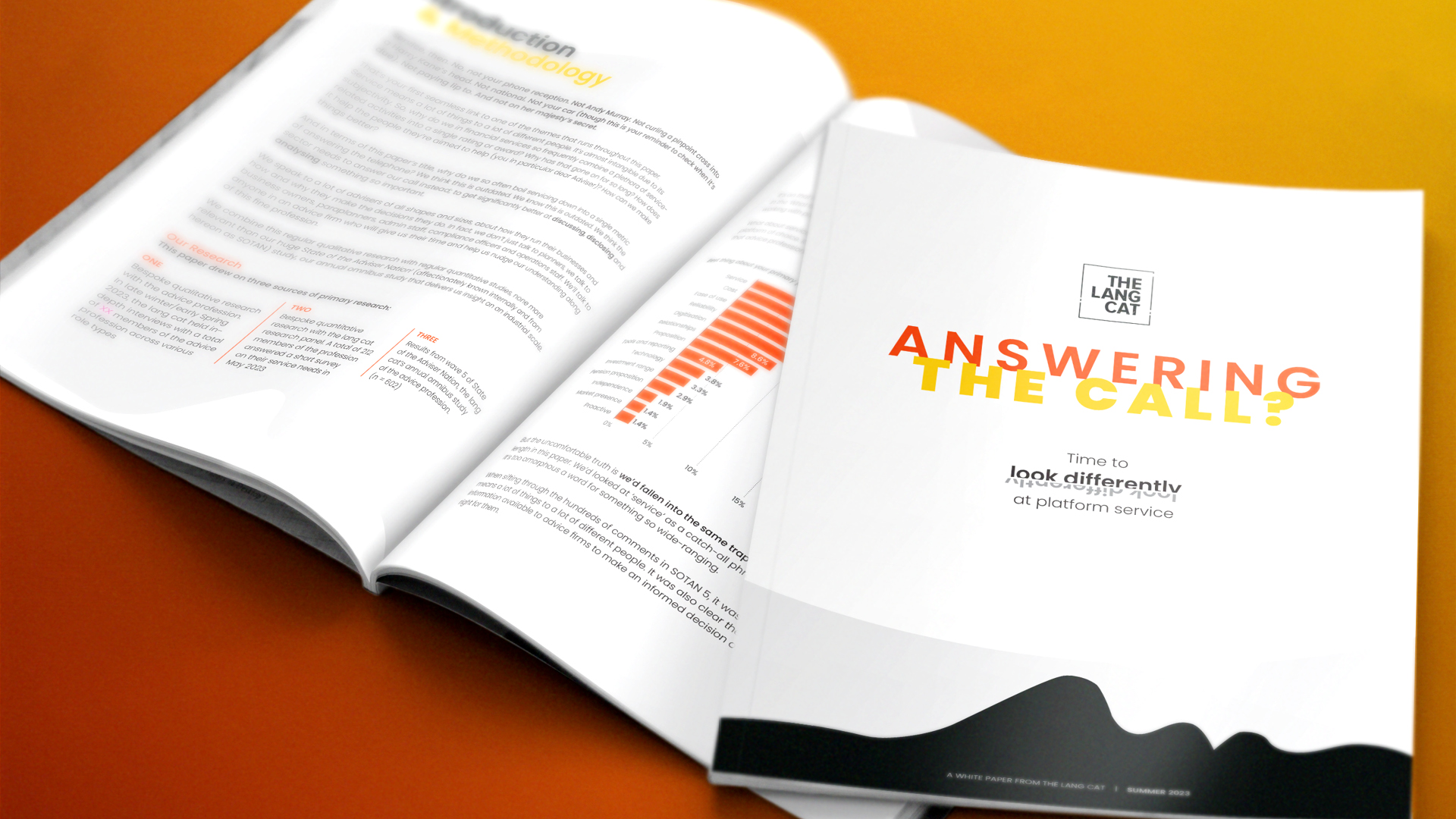Well, this is just tremendously inconvenient.
After putting out a blog on Zurich last week and a big update to subscribers to the lang cat Guide to Platform Pricing, AXA’s only gone and made a pricing change to its Elevate platform. I really wish these people would check with me first. Don’t they know who I am?
*phone rings, muffled conversation*
Ah. It turns out they know exactly. Awkward.
Anyway, inconvenience aside, Elevate has always had a tough sell on its book price – starting at 65bps and with an heroic number of step points (10 at the last count), meaning it’s often been forced down the tactical deal route. That’s fun for the sales guys who get to feel in control, but it’s not much use for developing a reputation for competitive pricing in the round.
However, all that is in the past ‘cos AXA has done the decent thing and chopped its standard rates, whilst simplifying the structure a bit – still stepped but with fewer of them. Here’s how it looks:
This is quite a cut. By way of contrast, the original starting point was 65bps for smaller portfolios – this is now down to 40bps. At £100k AXA used to reach into your pocket and have it away on their toes with 55bps – now 32bps. Feeding all this into the lang cat’s Recursive Pricing Engine (Turing Module Enabled) and standing well back, that’s a 40% cut. A little off the top usually doesn’t hurt – as the vasectomist said to his client – but 40% off anything is a serious step.
The structure is flat priced in terms of basis points, but there’s a £48 charge for the SIPP wrapper. I’m not sure this is necessary in this day and age – I mean, AXA are running pensions and stuff anyway, so it’s hardly a bother to do a few more – but an extra £48 is a much better deal than whapping 10bps onto the AMC and nicking a bunch of upside you’re not really entitled to. Drawdown is reasonably priced at £80pa and it’s per client not per arrangement – so even if you transfer in a bunch of pensions in drawdown with different review dates, it’s still just one eighty quid charge. Fairy muff.
So let’s have a look at a shortened table and see how it all shakes out – as ever, subscribers to the Guide get the full version, probably tomorrow or Thursday. We’ll do ISA/GIA first:
(We’ve loaded in some trading charges for AJ Bell).
OK, so the first thing to say is that this is a transformation for Elevate. While not challenging the price leaders such as Alliance Trust (not in the table), AJ Bell and Aviva, Elevate has moved from looking way out of touch to being in the hunt. Another way of saying that is that it’s only just caught up with the market. But if we look at the lifeco competitor set, AXA is now 2nd cheapest behind Aviva at the vital £100k portfolio point, and even shades Cofunds and Nucleus by a couple of bips each. The 28bps charge at the top end is too much, but my source at AXA tells me they’re open to bespoke pricing above £1m or so, so any advisers thinking of putting big cases on should phone first.
Note – in AXA’s stepped structure £100,000 is a precipice point, so my figures show their lower charge. If I did £99,999 the whole portfolio would be charged at a higher tranche point. C’est la vie, but it’s something advisers should be aware of.
In SIPP-land, the £48 inevitably makes a difference, but not a huge one. Here’s how it looks:
This is the same story – it puts Elevate into a competitive position in the market generally, but takes a big munch out of the other lifecos except Aviva. In particular, the 2 most recent entrants – AEGON’s ARC platform and Zurich’s ZIP – are looking a bit less clever and will have to fight even harder to demonstrate value. The picture for AXA looks even stronger in 2013 – the £48 doesn’t kick in till 2014 – and I suspect it’s something those with a penchant for negotiation can probably get rid of anyway.
A couple of other things – existing clients can be moved onto the new structure but this doesn’t happen automatically. AXA spout some stuff about control for advisers, but effectively what this does is create a legacy issue on a new model platform, which is all kinds of daft. A clue as to why, though, is that the Architas offer calcs aren’t smart enough to work out the proportion of a year that the client has been on each structure. So if you move a client on the offer (say) 50% of the way through the year from 60bps to 34bps, then the client’s cashback will only be 34bps for the whole year rather than a weighted cashback reflecting the time spent in each structure. That’s kinda daft, but it means that advisers using the Architas offer should think very carefully before moving clients outside of the cashback anniversary. Careful diary management is essential here.
Moving clients from the old to new charging structure is treated by AXA as an advised event, and given that it won’t be live until January, you can see what’s going on there. It’ll be an offline process – after all, it’s not like this is an online system – and AXA will be providing lovely forms which clients will have to sign. It’s probably worth it, though – on a £200k portfolio the client can save £460 a year, and it’s better in their pocket than a Parisian one.
In conclusion – AXA has been radical here compared to its existing structure. It should be praised for that, but we shouldn’t mix the depth of the cut required to make them competitive with them being genuinely radical next to the market. Their old structure was just ridiculously overpriced; this one isn’t. Game on.




